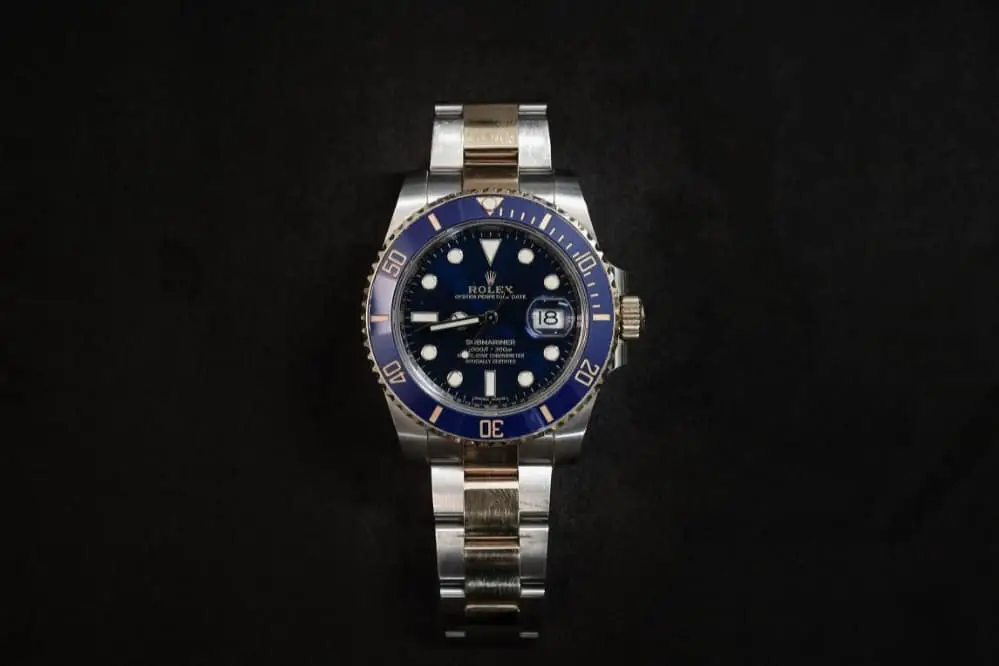When items depreciate, they drop in value over the years. This applies to a lot of different items, including watches. But with a higher-end watch, such as a Rolex, the depreciation is a lot less. As a general rule, people tend to believe that high-end luxury watches such as Rolex and others actually appreciate, or gain in value, over the years, but this is very rare indeed. The truth is that even luxury watches can depreciate in value, although the actual depreciation depends on many different factors. If you’re thinking about buying a particular watch because you consider it an investment, it’ll do you good to determine what does and doesn’t affect depreciation.
What Is Depreciation?
Depreciation is the drop in value of a certain product over time, and that value can depreciate different amounts according to the item itself. Watches depreciate roughly 3.6% every year on average, with an average loss of 16% over a 12-year period. Before going any further, it’s good to know that the less you pay for the watch in the beginning, the more it usually depreciates over time. Only the expensive luxury watches will have low depreciation numbers and may even appreciate in value from one year to the next. In addition, most of the depreciation of any watch occurs in the first year, and while they may depreciate every year, the amount they depreciate will be much lower starting the second year.
Some watches, such as Franck Muller, depreciate anywhere from 20% to 50% every year, while watches such as Rolex may actually appreciate over time. On average, many watches will reach a “break-even” point at roughly 12 years, not accounting for inflation. It’s good to think of depreciation numbers as broken down into two areas: average watches and luxury watches, since depreciation numbers can vary quite a bit between the two types. For instance, regular watches will depreciate quite a bit in the first year after purchase but usually depreciate 1% to 5% per year after that. Luxury watches may actually increase in value through the years, which is why the numbers mentioned so far should be considered averages of both types of watches.
Things That Can Affect a Watch’s Value
Certain things will affect the value of a watch, and most of them boil down to one thing: how well the owner takes care of the watch. There is also a difference between automatic and mechanical watches. If you buy a watch and want to make sure that it keeps as much value as possible, keeping the box the watch came in and the papers that came with it is a great start. What are some of the watch brands that depreciate at much lower rates and which have a chance to appreciate over time? They include watches such as:
- Rolex: Daytona, Submariner, GMT Master (I or II)
- Patek Philippe: Nautilus, Perpetual Calendar Chronograph
- Audemars Piguet: Royal Oak
- Omega: Speedmaster Professional
There are others, of course, but you’ll have some idea if your watch is one of those watches right from the start. How? Because you’ll end up paying a lot of money for it!
Factors That Can Cause Watches to Depreciate
Watch depreciation is affected by a lot of different things, so even if you plan to buy an expensive watch, these are things you need to be aware of before you decide which one to purchase. Things that can affect the depreciation of a watch include the brand, the model, and the demand for that particular watch. Other things include the current supply of the watch and also whether it is a limited edition. Celebrity influence can also affect the depreciation rate and overall value of the watch because if certain celebrities are wearing a particular watch, the demand usually goes up, which means the value of the watch can go up as well.
A few other factors to keep in mind include:
- Stainless steel watches, on average, will depreciate less than watches made out of precious metals, which tend to depreciate at a faster rate. This is mostly due to the fact that gold and platinum watches aren’t nearly as in demand as those made out of stainless steel, due to their high prices.
- Watches that are a bit too “trendy” usually depreciate faster, mostly because they tend to be popular for only a few years then they go away. This includes watches with bright or unusual colors and designs, gems or “bling,” etc.
- The condition of the watch also plays a huge role in its appreciation value. Just like anything else, watches that aren’t in good condition simply don’t appreciate like watches that have been taken care of by the owner.
Other things that cause a watch to depreciate more include personalizing or engraving the watch and adding a PVD coating to it. In other words, anything that you do to customize or personalize the watch will make it less attractive to buyers because buyers want a watch that is as close to the original as possible. In addition to these things, keep in mind that men’s luxury watches tend to depreciate less than women’s luxury watches. Why? One word: demand. There is simply more of a demand in the pre-owned market for men’s luxury watches than there is for women’s, although that has started to change somewhat in recent years.
If you’re interested in a luxury watch that won’t drop drastically in value after you buy it, choose a pre-owned watch that is only a few years old. Since most of the depreciation happens in the first two to three years, this will help you see less depreciation after you own it.
